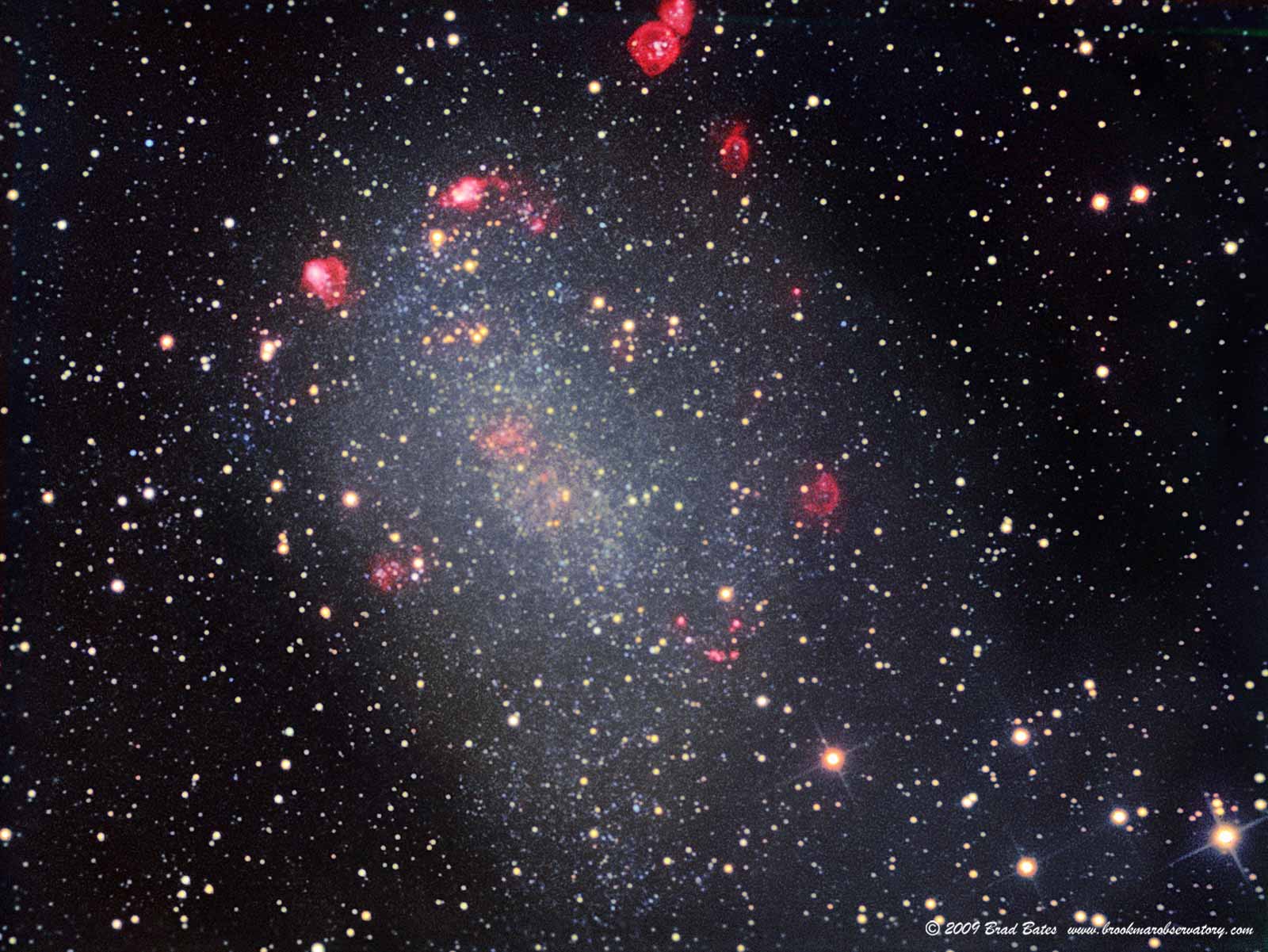Glima49 wrote:I'm wondering why the LMC's emission nebulae easily grow to over 100 light years in diameter, and complexes like the Tarantula Nebula and N11 are over 1000 light years across! I've seen regions like this in other more normal galaxies like M33 and C57, so why do HII regions form larger and easier in smaller galaxies like those than giant galaxies like the Milky Way? N66, a planetary nebula in the LMC is 6 light years across but a planetary nebula that size in our galaxy doesn't get that bright! Same thing with N49 and N63A supernova remnants. So why are they brighter in smaller galaxies than in the Milky Way? Anyone knows?
The thing to remember here is that most large galaxies in the nearby universe have already used up most of their gas after having formed stars in bout after bout for literally billions of years.
Smithsonian Astrophysical Observatory wrote:
CfA astronomer Matt Ashby joined with a team of astronomers to use the Hubble Space Telescope and the Spitzer Space Telescope to study over 30,000 galaxies in a survey of the sky specifically targeting objects in the early universe. They studied the first few billion years of the universe to determine the distribution of stellar masses and the star formation rates in galaxies at epochs as early as about 800 million years after the big bang. In an impressive piece of observational and analytic skill, the team improved on earlier measurements and found (among other things) that
the star formation rate per volume of space peaked about 3 billion years after the big bang and then declined, and that as the universe expanded and aged the star formation rate per unit of available mass also steadily decreased.
Since the universe is almost 14 billion years old, and star formation in the universe peaked about 3 billion years after the Big Bang, star formation in most galaxies has actually been declining for about 10-11 billion years.
But some small galaxies are different. For some reason, some small galaxies have been "left alone" for a long time, say billions of years, and during that time they have formed few stars and "hung on to" most of their gas reservoir. Then suddenly, and for some reason, their star formation is kick-started. Now they have lots of gas to play with, and they can form fireworks of new stars. In his book
The Galaxies of the Local Group, Sidney van den Bergh wrote that the Large Magellanic Cloud formed few stars for the first 10-11 billion years of its existence, and then it kick-started its star formation about 3 billion years ago. It has been sparkling with brilliant young stars ever since then. I also recommend
an article in Scientific American about the Magellanic Clouds, both LMC and SMC, which turn out to be quite unusual as satellite galaxies go, precisely because of their high levels of star formation.
You mentioned M33. I don't know very much about M33, but I do know that it is considerably smaller than the Milky Way and Andromeda, and its rate or star formation is much higher than what we find in the Milky Way and Andromeda. Still, the rate of star formation in M33 is lower than it is in the LMC. In all probability, M33 has also "been left alone" for a considerable part of its existence, so it has been able to conserve its reservoir of gas. Now M33 is interacting with Andromeda and has turned up its rate of star formation very much.
Planetary nebulas are not my forte. Nevertheless, if some planetaries in the LMC are particularly bright, there are three possible explanations for that. First, and most likely, the brightest planetaries likely result from the most massive and hottest white dwarfs, which would have collapsed into neutron stars if they had been just a little bit heavier. Since very massive stars are proportionally much more common in the LMC than in the Milky Way, there should be more massive stars turning into particularly hot and massive white dwarfs illuminating very bright planetaries in the LMC than in the Milky Way.
Second, the planetaries in the LMC are typically less metal-rich than the planetaries in the Milky Way, since the stars in the LMC are typically less metal-rich than the stars in the Milky Way. This fact may or may not affect the brightness of the planetaries. The reason why stars in the LMC are typically less metal-rich than the stars in the Milky Way is precisely because there have been long periods of "quiescence" in the LMC, when few stars formed and therefore only low levels of heavier elements were synthesized, few supernovas exploded and sent their load of heavy elements out into the LMC, and even comparatively few red giants sent their heavy metal-enriched gas out into their galactic environments.
Third, astrophotographer David Malin once wrote that the gas in the Milky Way is both more constrained and more turbulent than the gas in many smaller galaxies. And because the gas in small galaxies are typically less constrained and less turbulent than it is in the Milky Way, it is easier for stars to blow large bubbles and generally form large nebulas around themselves. Check out the picture at left of small galaxy NGC 6822 by Brad Bates. NGC 6922 has modest levels of star formation but a huge reservoir of unused gas, which means that it is ripe for a brilliant burst of star formation. Note that many of the newly formed stars in NGC 6822 are surrounded by huge bubbles of ionized gas.
Ann
 Infrared Portrait of the Large Magellanic Cloud
Infrared Portrait of the Large Magellanic Cloud
